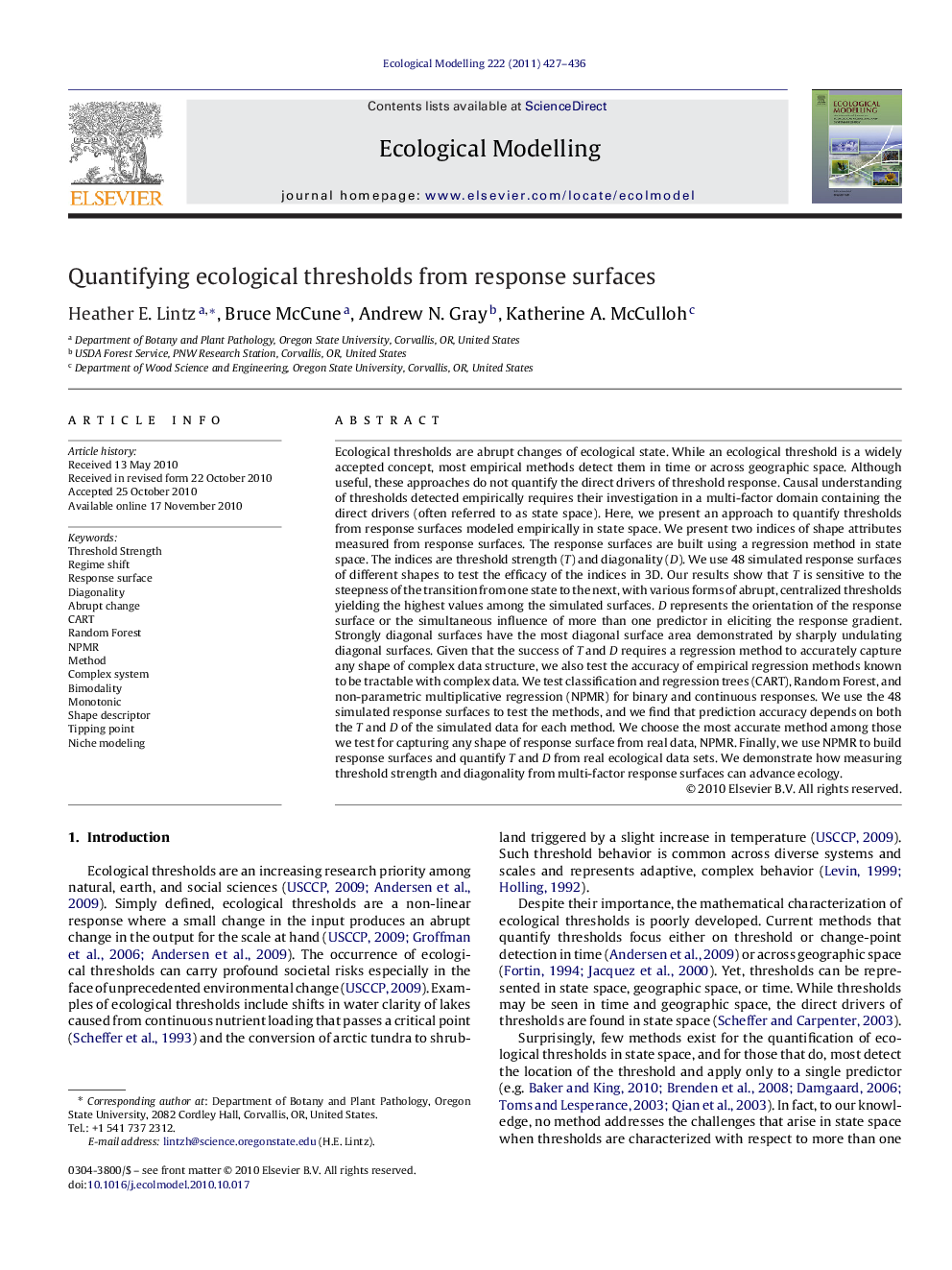| کد مقاله | کد نشریه | سال انتشار | مقاله انگلیسی | نسخه تمام متن |
|---|---|---|---|---|
| 4376989 | 1303404 | 2011 | 10 صفحه PDF | دانلود رایگان |

Ecological thresholds are abrupt changes of ecological state. While an ecological threshold is a widely accepted concept, most empirical methods detect them in time or across geographic space. Although useful, these approaches do not quantify the direct drivers of threshold response. Causal understanding of thresholds detected empirically requires their investigation in a multi-factor domain containing the direct drivers (often referred to as state space). Here, we present an approach to quantify thresholds from response surfaces modeled empirically in state space. We present two indices of shape attributes measured from response surfaces. The response surfaces are built using a regression method in state space. The indices are threshold strength (T) and diagonality (D). We use 48 simulated response surfaces of different shapes to test the efficacy of the indices in 3D. Our results show that T is sensitive to the steepness of the transition from one state to the next, with various forms of abrupt, centralized thresholds yielding the highest values among the simulated surfaces. D represents the orientation of the response surface or the simultaneous influence of more than one predictor in eliciting the response gradient. Strongly diagonal surfaces have the most diagonal surface area demonstrated by sharply undulating diagonal surfaces. Given that the success of T and D requires a regression method to accurately capture any shape of complex data structure, we also test the accuracy of empirical regression methods known to be tractable with complex data. We test classification and regression trees (CART), Random Forest, and non-parametric multiplicative regression (NPMR) for binary and continuous responses. We use the 48 simulated response surfaces to test the methods, and we find that prediction accuracy depends on both the T and D of the simulated data for each method. We choose the most accurate method among those we test for capturing any shape of response surface from real data, NPMR. Finally, we use NPMR to build response surfaces and quantify T and D from real ecological data sets. We demonstrate how measuring threshold strength and diagonality from multi-factor response surfaces can advance ecology.
Journal: Ecological Modelling - Volume 222, Issue 3, 10 February 2011, Pages 427–436